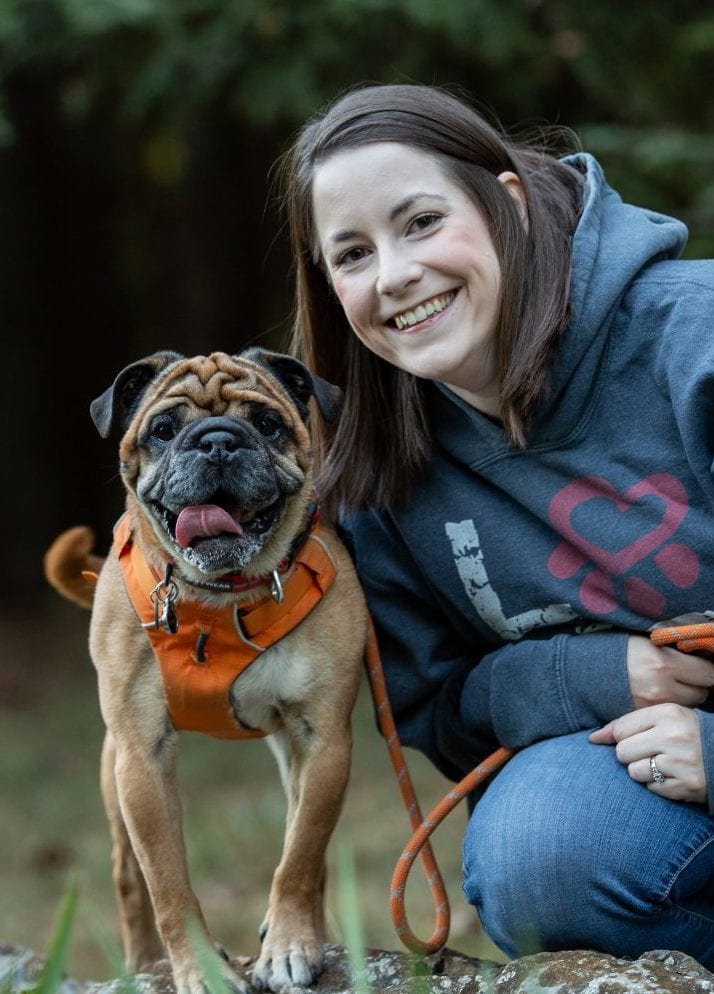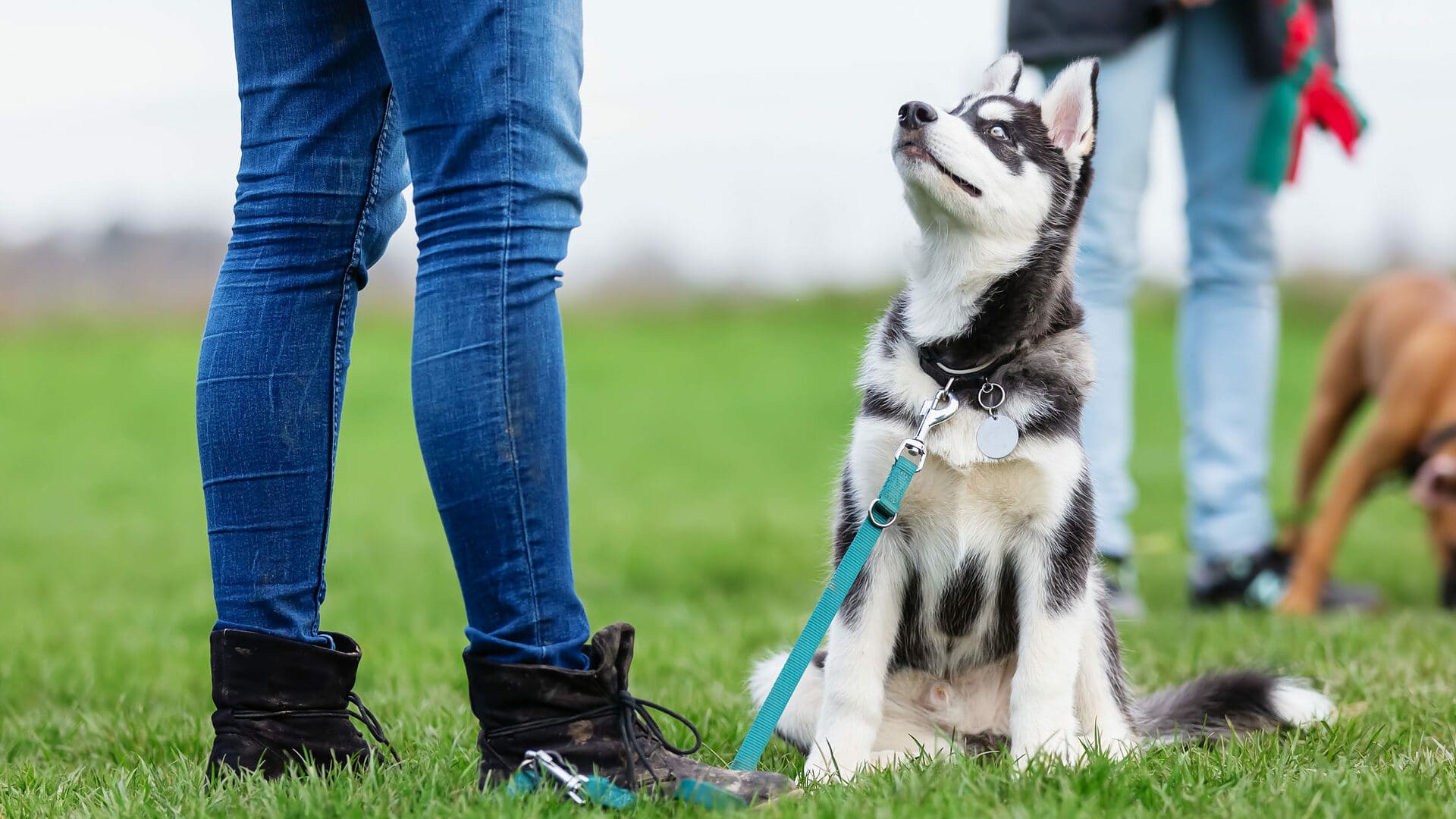Table of Contents
General Tips for Training Your Puppy
Use positive reinforcement training methods. Dog training is an unregulated industry, so that means that anyone can call themselves a dog trainer. There are many different methods used to train a dog, but studies show some outdated methods can actually be detrimental to dogs.
Positive reinforcement training methods are the most widely accepted methods that are backed by science. In fact, the American Veterinary Society of Animal Behavior recommends using only positive reinforcement methods in all dog training.
Find a dog trainer. Once your puppy has finished their puppy vaccines, it’s important to enroll your pup into a puppy class with a positive reinforcement trainer. This will not only help socialize your pup to new environments, dogs, and other people, but you’ll also be able to ask questions and get help directly from a knowledgeable trainer.
Keep training sessions shorts. Puppies get bored and tired easily. It’s important to keep training sessions short. This gives them time to process, and it leaves them wanting more. It’s important to keep training sessions fun and exciting instead of risking your puppy wandering off in the middle because of boredom. It’s best to train for 5-15 minutes 4-6 times per day.
Puppy Training Timeline
Similar to human babies, puppies go through different developmental phases as they grow. Though there’s never a wrong time to train, here is a general puppy training timeline.
8-10 Weeks Old
Socialize your puppy. Puppies go through a fear period from 8-11 weeks old. During this time, it’s best to focus on exploring the world and meeting new people and animals. Puppies are very sensitive and impressionable during this phase, so all of their interactions with new environments, people, or animals should be short and positive.
Potty training. Maintaining a consistent schedule is the key to successful potty training. Take your puppy outside first thing in the morning, after every meal and playtime or naptime, and before bedtime. Be sure to give your puppy a reward anytime they go to the potty outside.
Crate training. Introduce the crate to your puppy by feeding them in it or giving them a high value reward, like a stuffed Kong. Only keep your puppy in for a few minutes, and never use the crate as punishment.
Loose leash walking. Collars and leashes feel weird to puppies at first, so they might scratch at them initially. You can get your puppy used to the feeling by clipping these on while and just letting your pup drag it while you’re inside the house.
Basic Cues. You can start teaching your puppy the basic cues like sit, down, stay, and come as soon as you bring your pup home.
10-12 Weeks Old
Body handling. Your puppy is going to have a lifetime of home vet visits ahead, so it’s crucial to get them comfortable with accepting body handling. At this early phase, pair giving them a treat while you gently handle a part of their body. You should focus on handling they’ll need for the rest of their life, like nail trimming, ear cleaning, tooth brushing, and general brushing or grooming.
Dealing with mouthiness/biting. At this age, puppies start becoming mouthy. When you’re playing with your puppy, it’s not uncommon that they will start to put their mouth on your hand. When this happens, get up and redirect your pup to an appropriate chew or toy that they can bite.
Training class. At this age, your puppy should be finished with his vaccines so you can enroll them in a group puppy class. This will give your puppy the opportunity to play with other puppies of the same age, which will help their socialization skills.
12-16 Weeks Old
Leash walking. Now that your puppy has finished his vaccines, it’s important to work on loose leash walking outside. Loose leash walking is difficult for puppies, so it’s important to frequently reward your pup when they are right by your side. The goal of loose leash walking is to keep the leash curved at all times. If your puppy starts to pull, stand still until they come back to you.
Continue building on training behaviors. Your puppy may have finished puppy classes, but training is a lifelong activity! Continue building on your puppy’s knowledge. Try adding distance, duration, and distractions to the cues and skills your puppy already knows. Remember to continue rewarding all good behavior your puppy does!
6 Months
At this age, puppies enter the adolescence phase. This is a very difficult phase, so it’s important to continue rewarding good behavior and strengthening your puppy’s existing training skills. It’s not uncommon that some puppies experience a small regression in their potty training skills during this phase. If that happens, go back to the basics of taking your puppy out on a consistent schedule and using the crate when you can’t watch your puppy closely.
FAQ
Socializing your puppy means exposing them to new environments, people, and animals. These interactions should always be short and end on a happy and positive note. Some ideas to expose your puppy to: tiled floors, bicycles, toddlers, cats, and even people in uniforms.
Food is important when training behaviors, because it’s used to reinforce the good behavior. Once your puppy is older and is more proficient with their training, you can wean them off the food.

Alix is a veterinary technician turned dog trainer with over a decade of experience working with dogs. Although her educational background in animal science gave her a broad knowledge base, it was her own behaviorally challenging dog who helped her realize her passion in life is teaching dog owners how to live a better life with their dog. Using positive reinforcement based training techniques, Alix specializes in improving the dog and owner relationship by meeting all of the dog’s mental and physical needs to modify behavior problems like reactivity and aggression. Alix currently resides in Virginia with her husband and two dogs. In her free time, you can find her either reading a good thriller novel or out in nature camping and hiking with her family.








